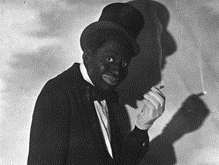Classroom Activities
Section 1
Theater and you: To start the unit, ask the students how much live theater they have seen. You can respond and track the answers verbally, or you can tally them into categories on the board. “Not much”, “several shows,” “Lots” would all be solid. Depending on the responses, ask further questions. The purpose here is to get students thinking about their own relationship to theater, as well as their communities’ relationship with it, or possibly lack thereof. As a secondary assignment, ask the kids to come up with a list of possible barrier between people and theater, as well as some ideas on how to address those barriers.
Romeo and Juliet: Building on the ideas from the previous lesson, have the kids read Act 2 Scene 2 of Romeo and Juliet, the famous balcony scene. Be prepared for questions regarding many of the words and phrases used, and I’d highly recommend reading through it yourself to look up any unfamiliar constructions in advance. Chances are, with all the breaks for explanations and discussion, this will take a while. It’s ok, as the confusion is something of the point at this stage of the exercise. By the end, the students should have a rough idea of what is happening in this portion of the show, and should be able to write a brief, modern language synopsis of the scene.
West Side Story: Act 1, Scene 5 of the Sondheim retelling of Romeo and Juliet covers the same territory of the plot as the excerpt they read the previous day. In this exercise, they will read the passage from West Side Story. Let them give their own thoughts on it before you enter into the question of readability. After discussing why one was easier to read/understand than the other, you can start to talk about other examples of this, including (but certainly not limited to) Kiss me Kate as an update of Taming of the Shrew or Hadestown as an update of the myth of Orpheus, itself a very early example of Greek tragedy. To further reinforce this idea, a good activity would be to have them to take a page of Shakespearean dialogue and rewrite it into modern parlance, perhaps to then share it with other students.
Section 2
This section is more concerned with the history of various people groups throughout American history. Due to the demographics of my school, most of the examples provided will be specifically concerned with Black and Hispanic contributions to theater, but you should feel free to substitute demographic groups that are more relevant to your students, as required.
Racial depictions in Theater: To start with, warn the students that this can be a sensitive subject, and there will be opportunities to explore their thoughts on this subject matter in discussion. Then, introduce pictures of some blackface actors, such as Al Jolson in The Jazz Singer. Allow the students to express their thoughts/feelings on the representation of a people group by people not of that group in such a stereotypical way. Then, show them the picture of Bert Williams, an African American performer, shown to the right.

Bert Williams, African American star
Discuss, if Al Jolson was in the wrong for acting in blackface, why would a black actor adopt many of the same stylings for his own performance? This can lead into a discussion of racial stereotypes in theater. There are other examples for most every other demographic being lampooned and caricatured in theater, particularly from the 1800’s and early 1900’s.
Many actors felt that they had to adopt these caricatured personas in order to achieve success, and did so. Ask the students, was this an appropriate thing to do, or would refusing to engage with these stereotypes have been the better choice, even if it prevented them from having personal success?
Many voices: Building on the previous lesson, this lesson looks primarily at the mid-20th century, and shows such as Raisin in the Sun and West Side Story, as American theater starts to look more at minority communities. Playwrights in this era, both from inside of and outside of those communities, begin turning to them as examples of American society, distinct but not separate from American culture in general. Raisin, a show written by a black woman, and West Side Story, by a white man, should both be excerpted as a preview for a discussion by students regarding how they are similar and different in their depictions of nonwhite communities. This is also a good time to bring up a project that will last for several days/lessons. Students should select a minority theatrical figure (actor, director, playwright, etc.) and research and write a short essay about that figure and their contributions to American theater. You can provide a curated list to students, or allow them to pick their own subject, per your approval.
Modern Theater: Show students appropriate excerpts from In the Heights, Hamilton, or the ballroom revival of Cats. How do these differ from the theater we’ve seen in previous lessons? Today, some of the biggest theatrical successes in both stage and screen are being written and produced by black and Hispanic creators. For their long term project that they started previously, encourage them to use this knowledge to connect the theatrical figure they selected to modern theater, and the contributions they made to get us to the point we are today. This is also a good time to talk a little about actors and creators like Andre De Shields or Lin-Manuel Miranda, and how casting in modern theater is increasingly unrestricted based on heritage, and that there are more opportunities than ever available to them and people in their communities.

Comments: